Installing Stoves and Water Filters in San Jorge la Laguna
We began the day with a sweet presentation by a preschool in Panajachel. It included the presentation of the Guatemalan flag and the singing of their national anthem. We were given a welcoming message and we were treated to some dances performed by the preschoolers followed by an explanation of the colors and patterns in their clothing.
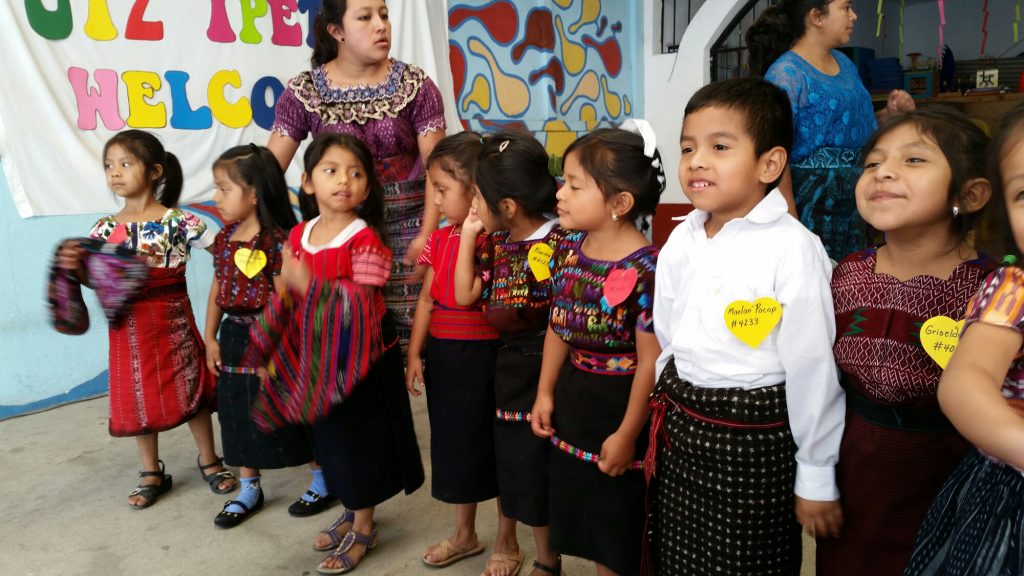 Next, we loaded back into the back of the pickup truck and headed to the workshop to pick up stove pieces and water filters. We formed an assembly line to make the process faster, loading each piece of concrete one by one.
Next, we loaded back into the back of the pickup truck and headed to the workshop to pick up stove pieces and water filters. We formed an assembly line to make the process faster, loading each piece of concrete one by one.
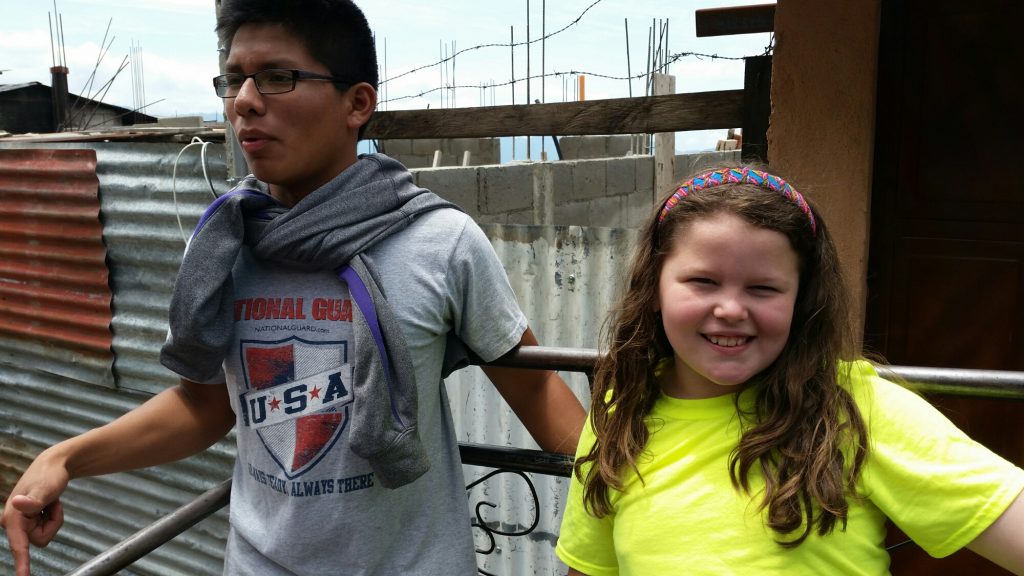 All of the stoves and water filters we delivered were to the community of San Jorge la Laguna. When we got to the part of the highway where the community of San Jorge was a steep descent (which is where all the heavy concrete and 100 pound bags of sand had to go, naturally) we split into two groups.
All of the stoves and water filters we delivered were to the community of San Jorge la Laguna. When we got to the part of the highway where the community of San Jorge was a steep descent (which is where all the heavy concrete and 100 pound bags of sand had to go, naturally) we split into two groups.
Trent and his family and Cori went to the home of Trent’s oldest sponsor student, Frank. Frank lives in the most inconvenient of places. First, you have to go down a steep hill, and then after a brief stable area you have to start climbing up the other side. The pathway is not paved, for the most part, and it is very physically demanding — for anyone!
My family opted to volunteer to break off into a second group.While Trent’s family delivered a stove and water filter to Frank, we delivered two stoves and a water filter. The first group’s trek was so long and labor-intensive that we were able to do more than twice the work in roughly the same amount of time. Before I share my experiences, I’d love to share some photos of Trent’s delivery. With sincere gratitude, we would like to publicly thank LAAF-WI, as part of your donation was used to provide a much-needed stove for this family.
We also provided a food basket and some fruit. Without a stove, a family has to gather firewood and cook over an open flame. Oftentimes a family does not own land, so there are no “yards” between homes and the open cook-fires are build indoors. Imagine the smoke inside the home with poor (or no) ventilation. Many rural families have terrible respiratory health and there is a thick layer of soot on their ceiling. Besides the damage to their health, a family that cooks over an open fire spends about 40% of their total earnings on firewood, not to mention the amount of time it takes to gather it and carry huge bundles back home. With a stove, a woman can prepare meals off the ground, reducing burns or fires that get out of control. Respiratory health is improved, less money is spent on firewood, and the time savings allows a woman to spend more time in income-producing efforts such as weaving or bead work.
When a stove is delivered, we first determine whether the intended spot is flat enough to support it safely. If not, we scratch dirt until it is level. Then, concrete blocks are arranged in a way that supports the base of the stove. A terra cotta fire box, sand, and used ashes create the proper heat distribution, and then the cook surface is placed on top. There are inner rings that can be removed if larger pots are used. Then, the stove is vented to the outside. Sometimes, this requires that we cut a hole in their roof (which is usually corrugated metal) but oftentimes families do not want the hole to be cut, as they are concerned that there is an increased chance of rain leaking into their homes, turning the dirt floor to mud, or in the case that a family has a concrete floor, that it becomes slippery.
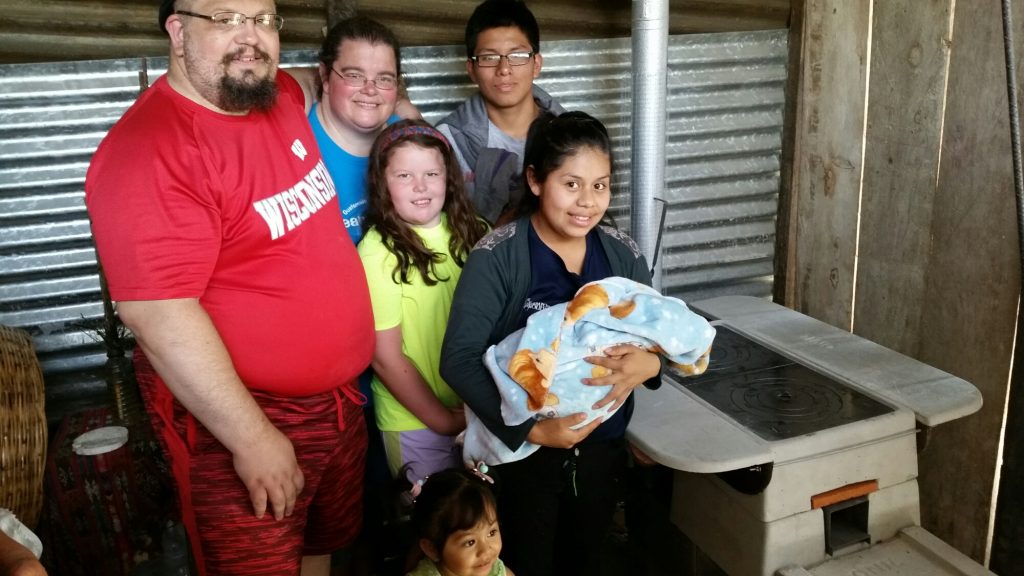 Our first stove and water filter delivery were to the same home! Thank you so much to Dan Miller and Rick Himes for providing these items!
Our first stove and water filter delivery were to the same home! Thank you so much to Dan Miller and Rick Himes for providing these items!
Without a water filter, children and the elderly are especially susceptible to waterborne diseases and illnesses. The water supply is full of parasites, but with a water filter, a family has clean water for approximately ten years and the ones with lesser immunity avoid medical problems which require medicines that they cannot afford.
The young mother asked that I please extend her appreciation and wishes for continued blessings and fortune for you. She thanks you so much, as she knows that her babies will have a fighting chance at good health with clean air and clean water! THANK YOU!
Although the first delivery was near the side of the road, and the truck was actually to drive right up to it, the second home to receive a stove was down a long steep path. It was paved, but a truck couldn’t drive it. I tried to get a picture which would show the treachery of it, but the perspective is hard to photograph.
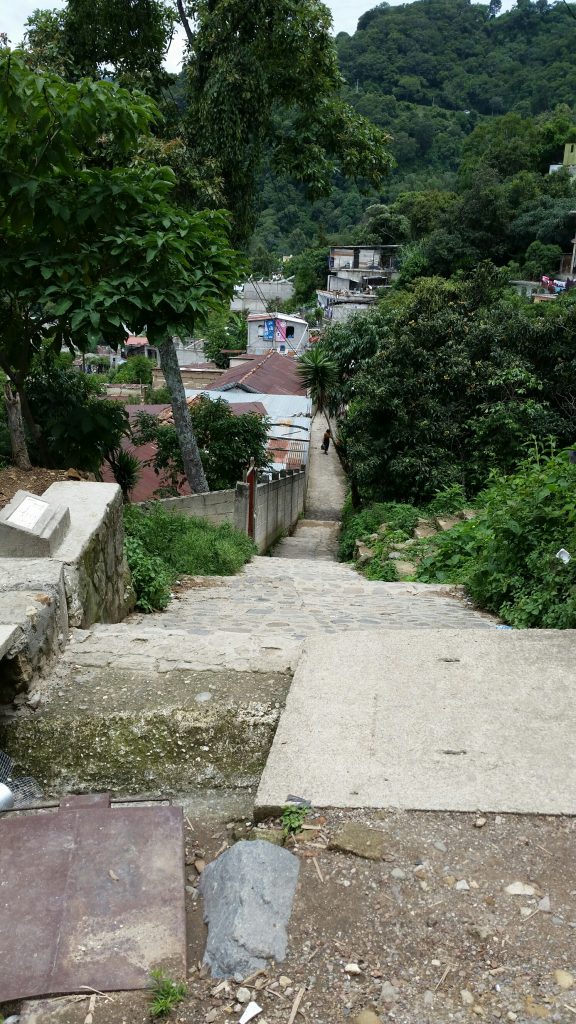 The people that live in this community have grown accustomed to the high altitude and the steep hills, but out-of-shape people like me find it breath-taking. (This is a play on words, because not only is the view of the lake from San Jorge breathtaking, but walking among the villagers takes all my breaths away!) Here is a photo of Lake Atitlan from the front of house #1 and then my favorite Lake Atitlan photo from this trip.
The people that live in this community have grown accustomed to the high altitude and the steep hills, but out-of-shape people like me find it breath-taking. (This is a play on words, because not only is the view of the lake from San Jorge breathtaking, but walking among the villagers takes all my breaths away!) Here is a photo of Lake Atitlan from the front of house #1 and then my favorite Lake Atitlan photo from this trip.
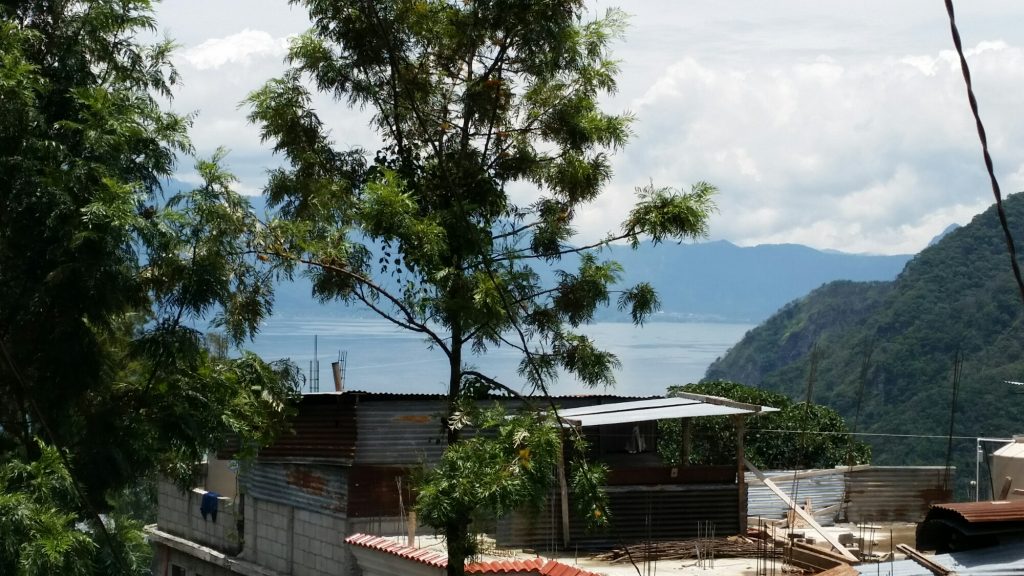
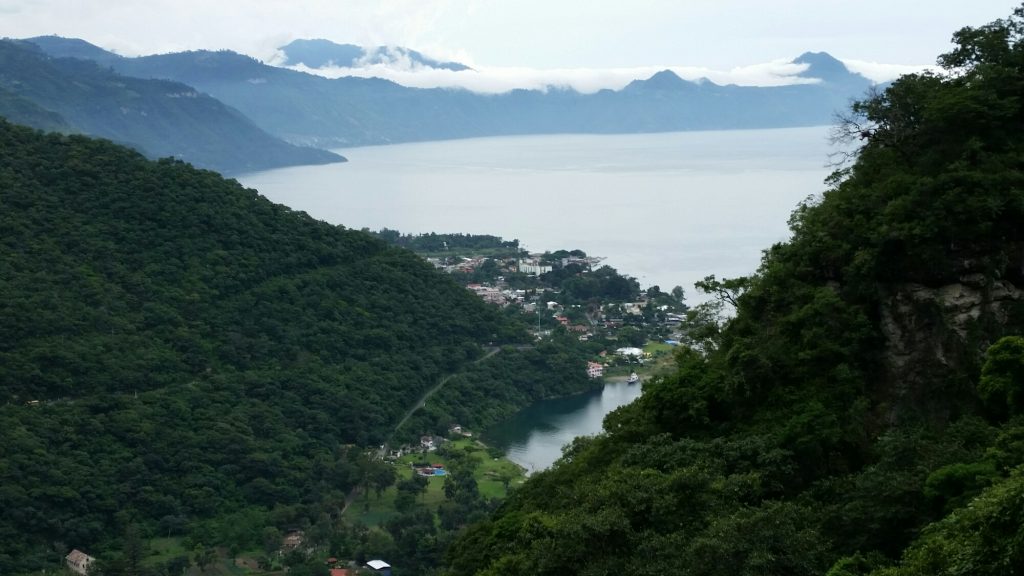 Our second delivery, to the home at the bottom of the steep path, was to a family that includes a grandmother and children of two children. The kids pictured here are Elmer, Diego and Estephany. They are cousins. They were very kind and courteous, offering to bring out the best chairs for us to sit, and were very friendly. They asked Sarah her name and how old she was. Those were two questions, in Spanish, that Sarah knew how to answer! I have been proud of the way Sarah and Scott have both attempted to use more Spanish on this trip!
Our second delivery, to the home at the bottom of the steep path, was to a family that includes a grandmother and children of two children. The kids pictured here are Elmer, Diego and Estephany. They are cousins. They were very kind and courteous, offering to bring out the best chairs for us to sit, and were very friendly. They asked Sarah her name and how old she was. Those were two questions, in Spanish, that Sarah knew how to answer! I have been proud of the way Sarah and Scott have both attempted to use more Spanish on this trip!
To donors that contribute $186, this is where your money goes! Thank you so much for helping us to bless families in this way. I know they appreciate not having to gather firewood as often. I can’t even begin to imagine how much more effort it takes to carry huge bundles of firewood on your back when you have to travel such a steep incline. It’s hard enough to carry your own weight, let alone with having something strapped to your back or on your head.
After our stove and water filter installations today, we served food at the Elderly Feeding Center in San Jorge. After they had all been seated, we passed out cups, plates and bowls of food. They come on a daily basis and receive a meal every day. For those that are too weak to make the walk to the Feeding Center (which thankfully is right off the main square) then a grand child can pick up a meal and take it on the old person’s behalf back to her home.
After a long day of serving others, we went back to Panajachel to freshen up a bit and then went to Guajimbo’s for dinner so that *we* could be served. In the evening it rained (again) but I am thankful that the rain is coming in the evening and overnight instead of during the day when we are trying to work!
While seated at the table and enjoying our dinner at the restaurant, we were interrupted by a mobile street vendor. Her name was Ana and she had a swaddled baby on her back. She was selling scarves. I said “No, gracias” about ten times, but she just didn’t give up. She said she wanted to show me how it could wrap hair and be worn on the head. She used Sarah for a personal assistant. I really had no intention of buying, but I did. I’m a sucker for all this Guatemalan textile stuff. 🙂

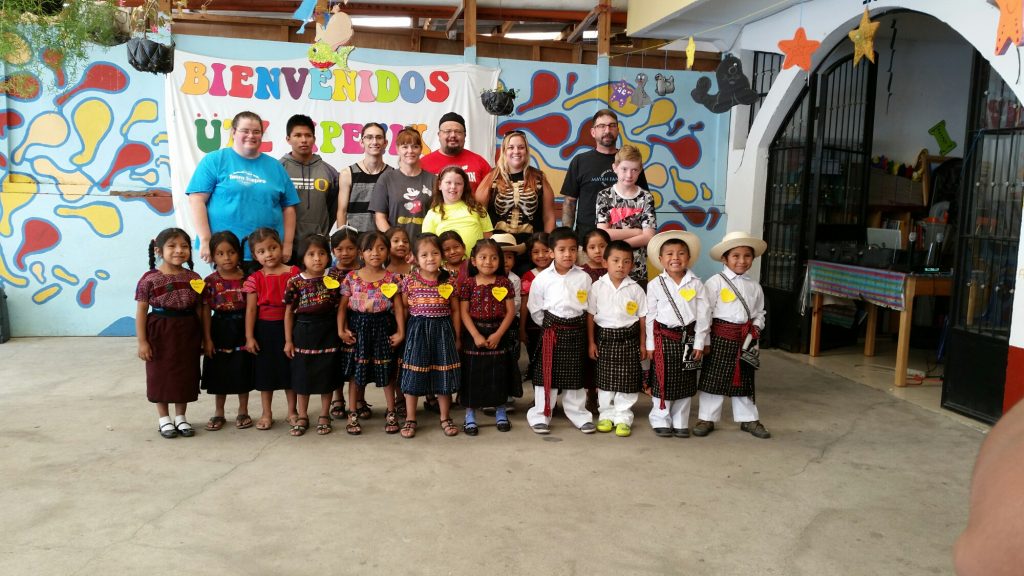
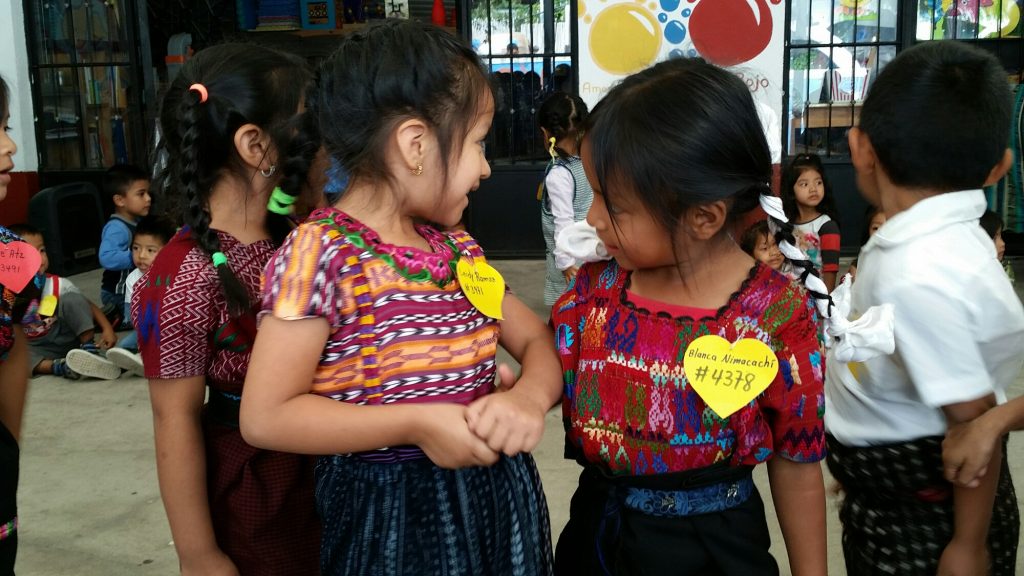
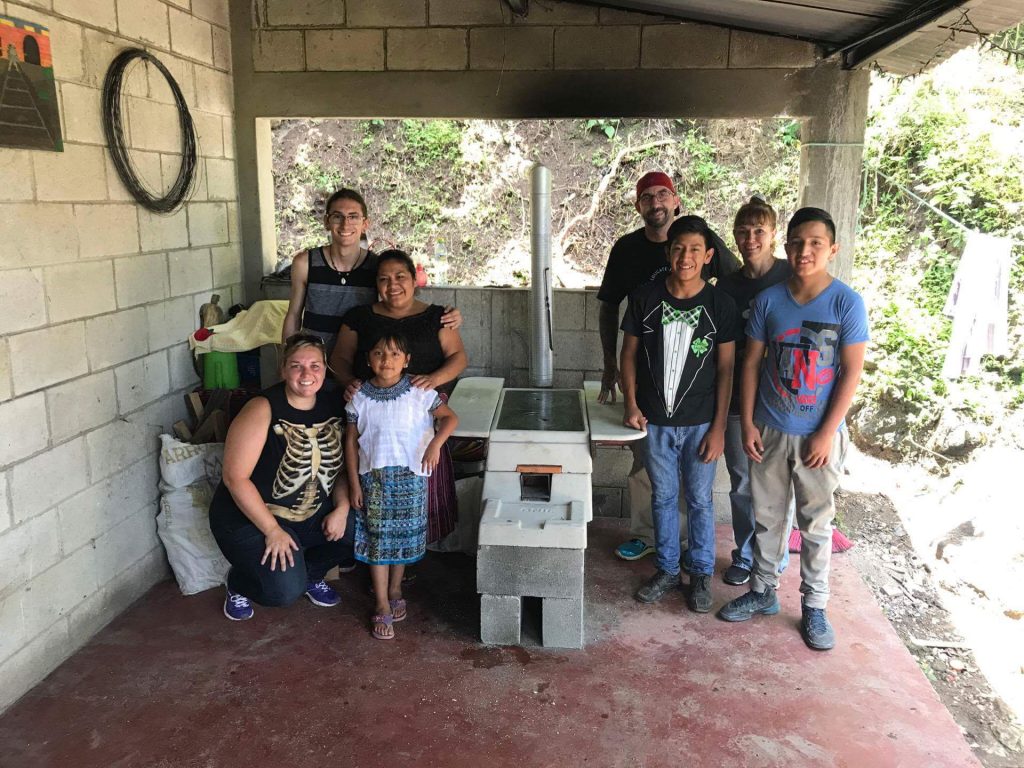
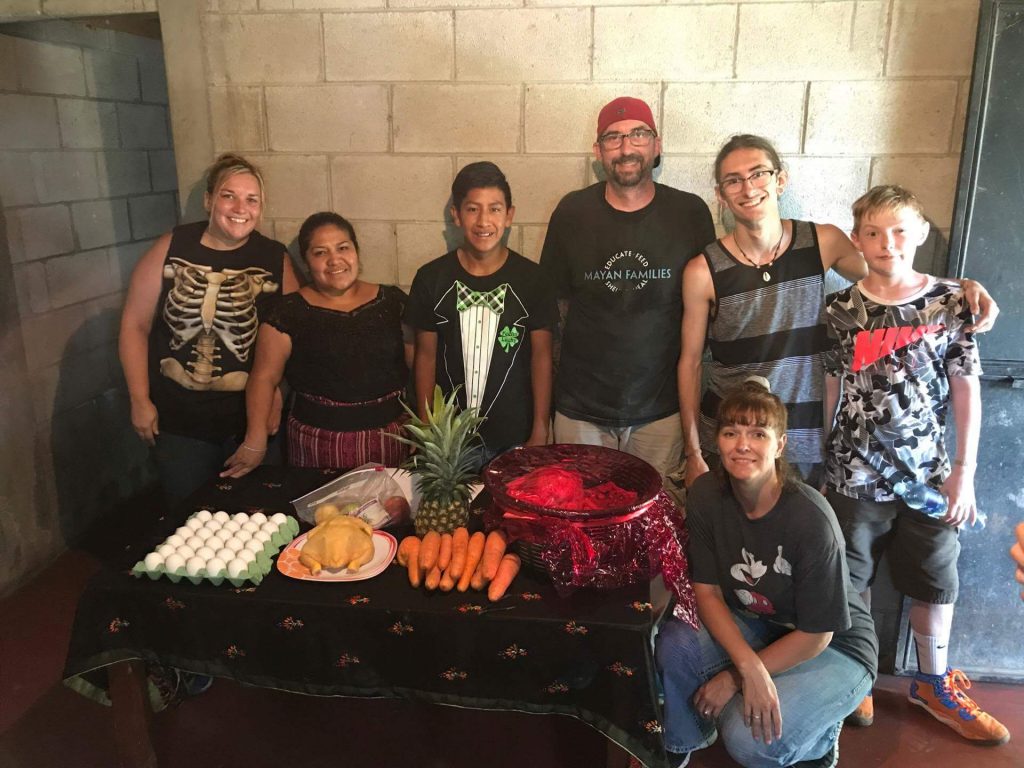
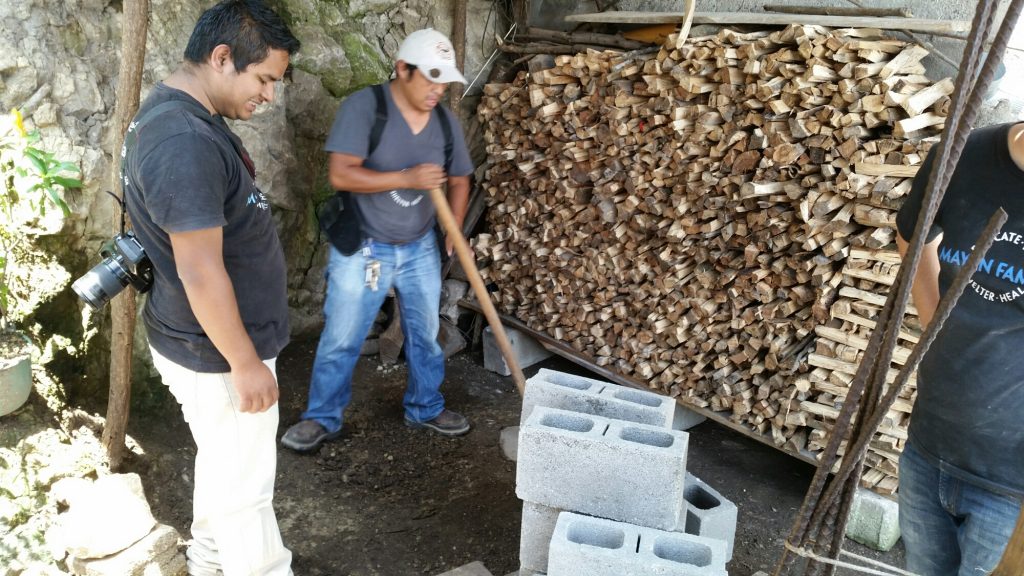
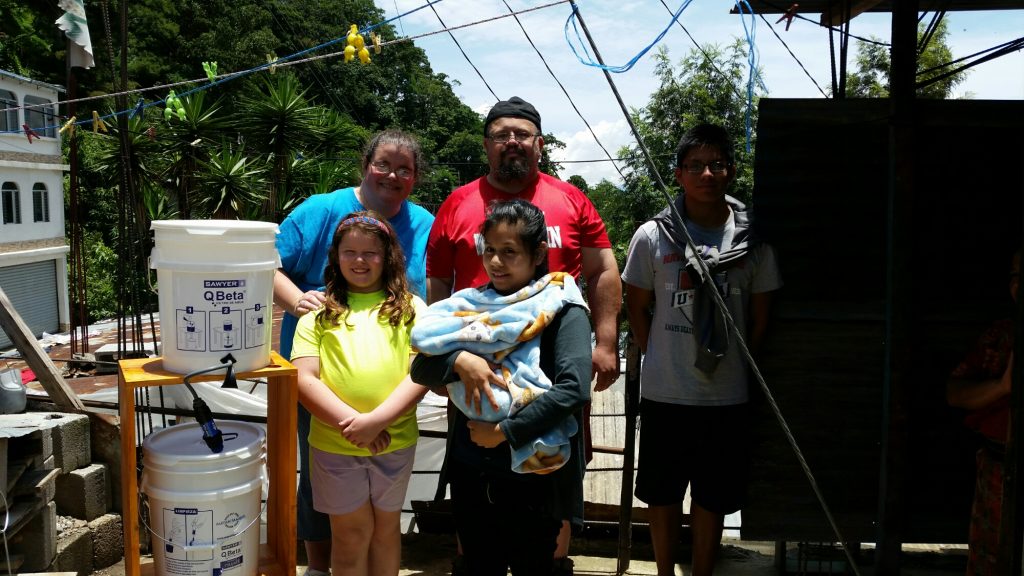
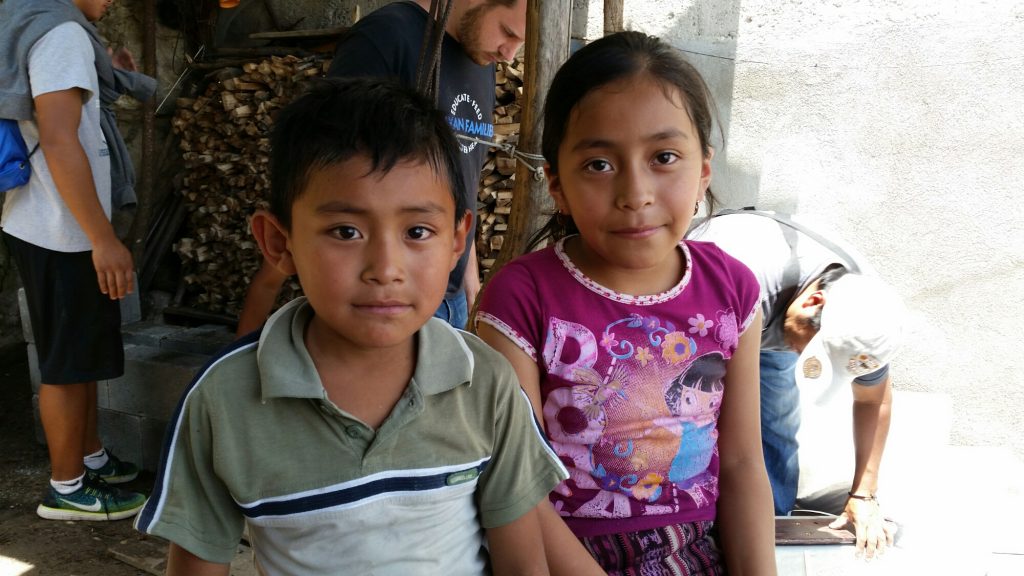
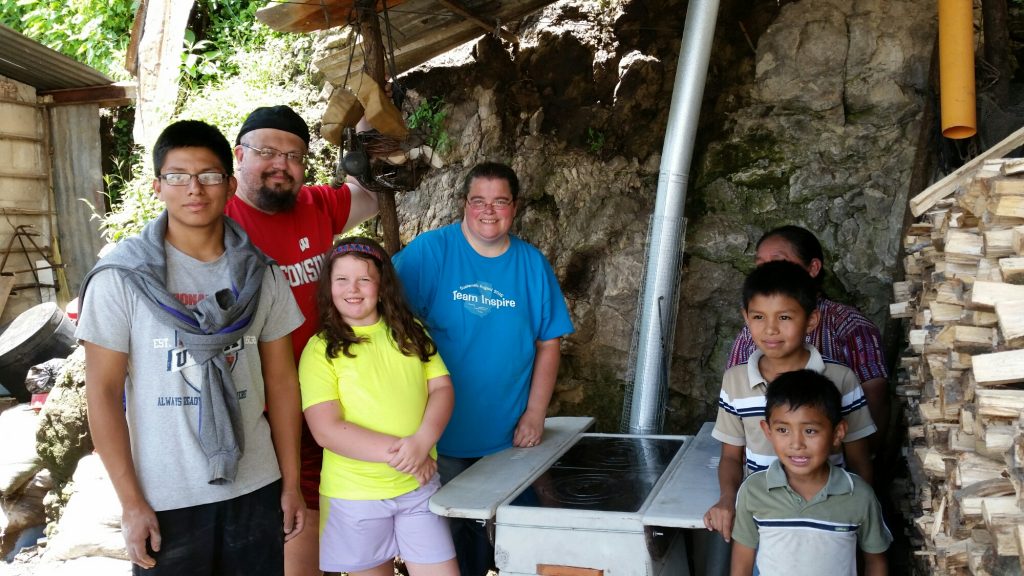
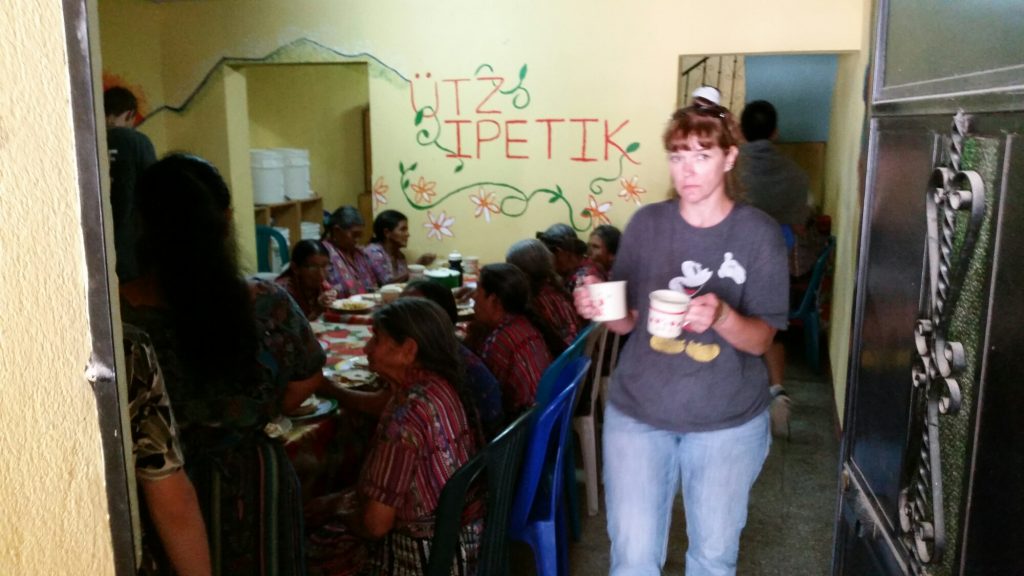
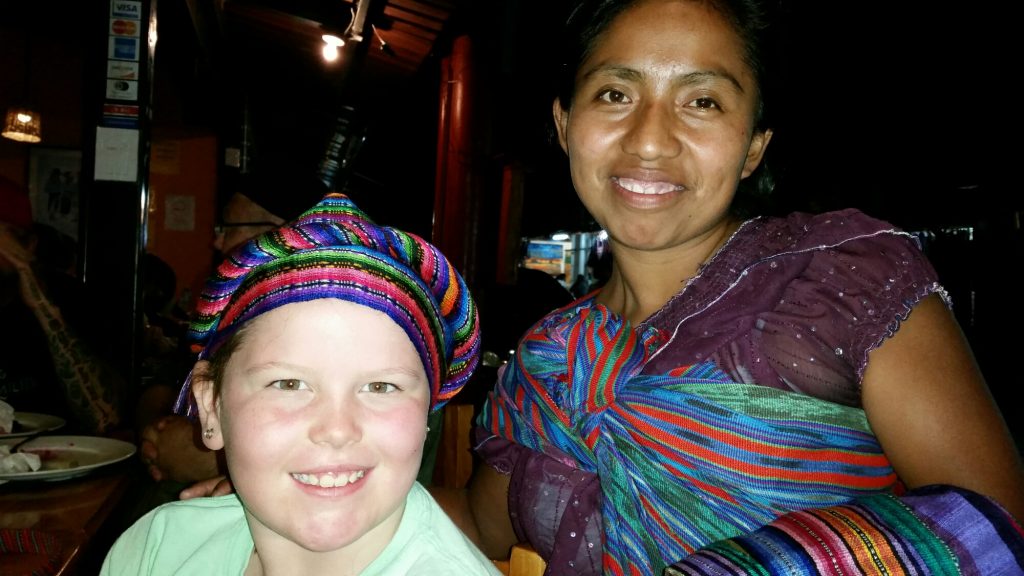
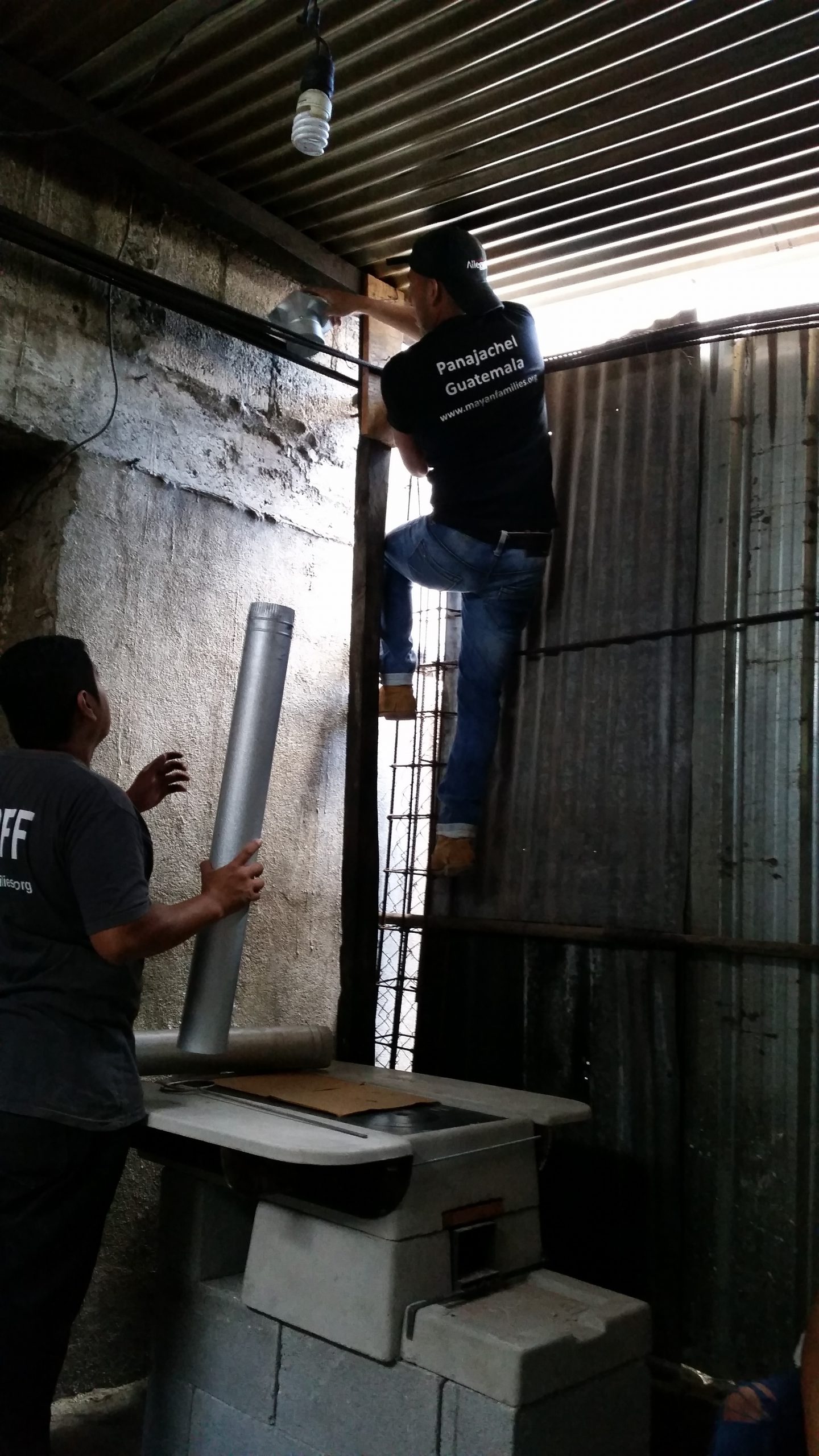
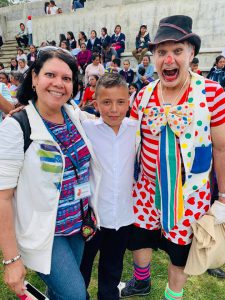 The “right” opportunity arose when I learned about a travel opportunity for adoptive families which would include volunteer work and cultural sightseeing. Being members of that team had a profound impact on me, Lillian and Andrew. Not only were we able to make a real connection to our son’s birthplace, but we met incredibly warm and generous people, all of whom we now consider to be a part of our “family.” In addition to the volunteer work I shared with the Team, I also was able to “give back” by performing as my alter ego, “Farfel the Clown” at a barbecue for children of The Backyard School. It will remain one the proudest and happiest memories of my life.
The “right” opportunity arose when I learned about a travel opportunity for adoptive families which would include volunteer work and cultural sightseeing. Being members of that team had a profound impact on me, Lillian and Andrew. Not only were we able to make a real connection to our son’s birthplace, but we met incredibly warm and generous people, all of whom we now consider to be a part of our “family.” In addition to the volunteer work I shared with the Team, I also was able to “give back” by performing as my alter ego, “Farfel the Clown” at a barbecue for children of The Backyard School. It will remain one the proudest and happiest memories of my life.
Totally awesome in every way! Thanks for sharing the details with all of us and for your work and efforts on our behalf! I’m tired just hearing about the steep hills. Lol We are glad it is going well. It sounds like everything is arriving at it’s intended destinations.
Muchas gracias amigo! The family that got the water filter you donated will be in the next blog post so keep an eye out! 🙂